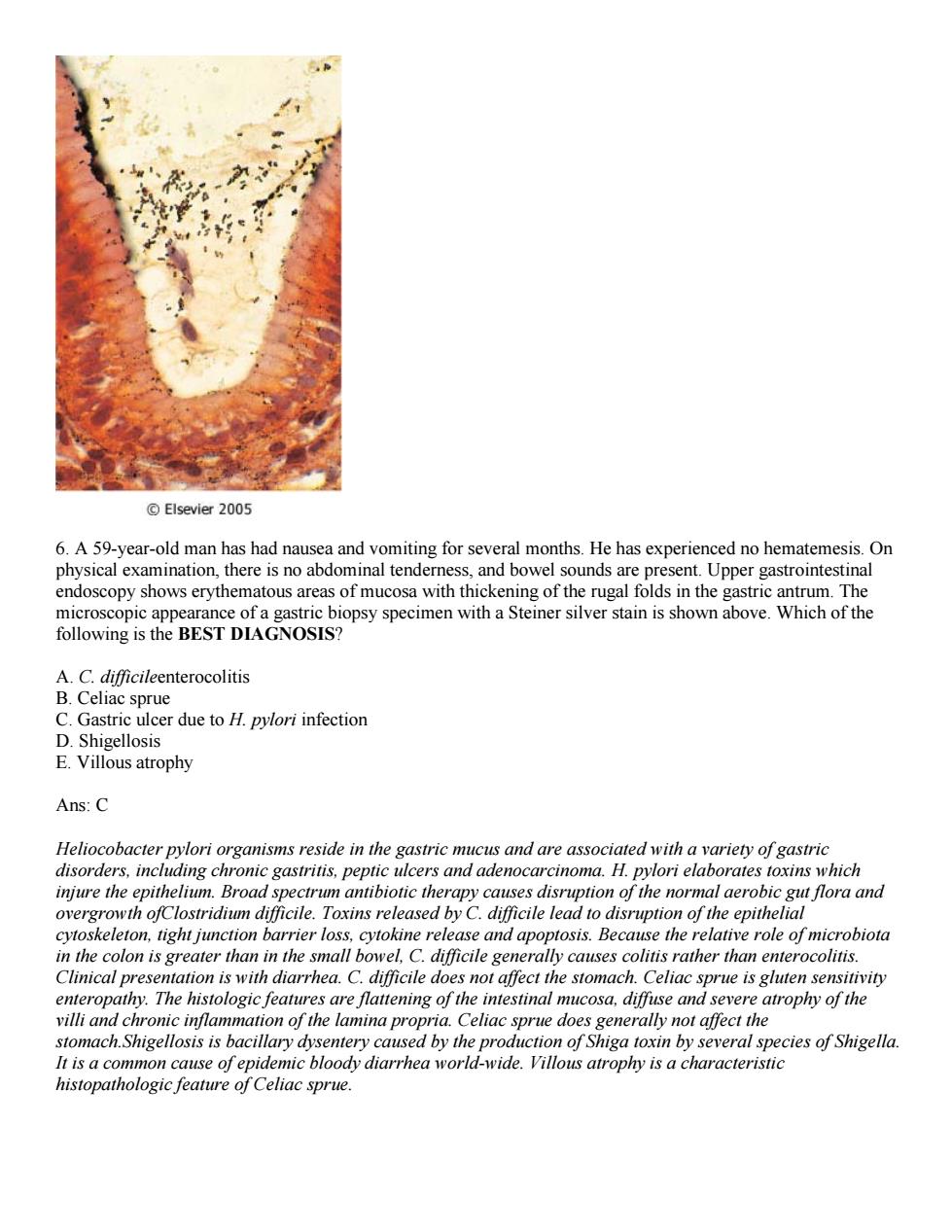正在加载图片...

©Elsevier2005 6.A 59-year-old man has had nausea and vomiting for several months.He has experienced no hematemesis.On physical examination,there is no abdominal tenderness,and bowel sounds are present.Upper gastrointestinal endoscopy shows erythematous areas of mucosa with thickening of the rugal folds in the gastric antrum.The ymnnrroeWhich f the nac sprue ulcer due to H.pylori infection Ans:C n ulla paiploossp aip pup snoms susiup8.40 1oldd 4alongooo!l disorde cinoma.H toxins which xins released by C cile lead te nsrupton of the epith on is greater tna general prese eliac sprue is gluten sens eeopa ucosa.ay rophy of the prop gene ot affec ch.Shigellosis is bac pro n D species of Shigella us atrophy is a characteristic Celiac sprue 6. A 59-year-old man has had nausea and vomiting for several months. He has experienced no hematemesis. On physical examination, there is no abdominal tenderness, and bowel sounds are present. Upper gastrointestinal endoscopy shows erythematous areas of mucosa with thickening of the rugal folds in the gastric antrum. The microscopic appearance of a gastric biopsy specimen with a Steiner silver stain is shown above. Which of the following is the BEST DIAGNOSIS? A. C. difficileenterocolitis B. Celiac sprue C. Gastric ulcer due to H. pylori infection D. Shigellosis E. Villous atrophy Ans: C Heliocobacter pylori organisms reside in the gastric mucus and are associated with a variety of gastric disorders, including chronic gastritis, peptic ulcers and adenocarcinoma. H. pylori elaborates toxins which injure the epithelium. Broad spectrum antibiotic therapy causes disruption of the normal aerobic gut flora and overgrowth ofClostridium difficile. Toxins released by C. difficile lead to disruption of the epithelial cytoskeleton, tight junction barrier loss, cytokine release and apoptosis. Because the relative role of microbiota in the colon is greater than in the small bowel, C. difficile generally causes colitis rather than enterocolitis. Clinical presentation is with diarrhea. C. difficile does not affect the stomach. Celiac sprue is gluten sensitivity enteropathy. The histologic features are flattening of the intestinal mucosa, diffuse and severe atrophy of the villi and chronic inflammation of the lamina propria. Celiac sprue does generally not affect the stomach.Shigellosis is bacillary dysentery caused by the production of Shiga toxin by several species of Shigella. It is a common cause of epidemic bloody diarrhea world-wide. Villous atrophy is a characteristic histopathologic feature of Celiac sprue